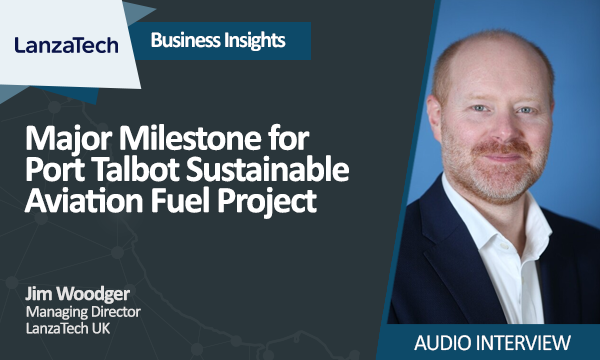 Written By:
Written By:
John Jackson
Industry Editor
With its environmental credentials, sustainable timber has a key role to play in achieving zero carbon ambitions, and as a result increases in domestic and global demand are already seeing supplies of this essential material come under pressure. For Wales is this an opportunity to secure our long term supply of home grown sustainably forested timber?
In 2021 it seems impossible to imagine moving into a new home made entirely of wood that didn’t use any nails, screws or glue in its construction. Yet turn the clock back to the Heian Period 793-1185 in Japan and that’s exactly how your home would have been built. Skilled carpenters (Miyadaiku) would craft an intricate series of interlocking joints that provided the houses, shrines and temples they built with such structural integrity they could even withstand earthquakes. Kumiki joinery is a beautifully considered approach to construction, with a variety of hand carved joints that could easily be mistaken for works of art, as shown in this short video. On a very practical level this three dimensional “jigsaw” like construction method allowed the buildings to be easily repaired or even de-constructed and rebuilt in different locations.
Back in twenty-first century Wales, considering the volume of buildings we construct, the hand carving of joints for wooden buildings simply wouldn’t be economically viable. However, this Japanese history lesson does illustrate how timber has, for over 1,000 years, been used effectively as a structural building material. As a material timber has the exceptional advantage of being growable, and as trees grow they have the added benefit of absorbing CO2. Today, as a construction material, timber has an increasingly important role to play as we transform into a zero carbon nation, which in itself also presents an opportunity for Wales to invest in growing its sustainable timber industry.
The key word here is “sustainable” and it's of critical importance that any timber we use originates from sustainable sources. The Designing Buildings Wiki defines sustainable timber as: “ timber that has been harvested responsibly from well managed forests that are continuously replenished; and ensure that there is no damage to the surrounding environment, or to native flora and fauna.” However, it's equally important to ensure that when timber comes to the end of its life cycle it doesn't go into landfill where it will release even more harmful methane into the atmosphere. Which, as an aside that applies to all materials, also highlights the increasing need to focus on what happens to things when they cease to be usable and need to be disposed of.
With an increased shift towards Modern Methods of Construction (MMC) demand for timber is set to increase not only as means of building frames but also for factory built panels and complete modular homes. In addition we’re also seeing timber being used for a wider range of buildings. For example, in Norway: Mjøstårnet, an 18 story wooden tower block some 85.4 metres tall was completed in 2019. This comes at a time when the industry is issuing an increasing number of warnings about shortages of key building materials including timber, as highlighted by Nick Boluton, Head of Technical and Trade for The Timber Trade Federation who explains in his 1st June 2021 blog post that there are “major challenges ahead for timber users in Q3 2021, as the balance between supply and demand continues to tighten.”
In their May 2021 White Paper, Woodknowledge Wales illustrated the significance of this situation by explaining that: “Unprecedented price volatility of timber is constraining the development of the timber frame manufacturing sector. This threatens the delivery of Welsh Government’s affordable housing, MMC and zero carbon strategies.”
The White Paper also provides excellent context behind the current situation and offers a clear recommendation that a substantial tree planting programme is needed to help Wales better meet its timber consumption requirements of the future. I do recommend reading the full document: Unlocking the Full Potential of Offsite Manufactured Timber Housing in Wales: The Challenge of Timber Price Volatility, authored by Gary Newman, Chief Executive and Dainis Dauksta, Technical Manager.
Developing our wood-based industries also has the potential to deliver wide reaching benefits for Wales, as Gary explains: “By developing an interconnected supply chain from tree to timber homes, we gain better control over future resource supply. Our move towards a wood economy already attracts investment that will create jobs and skills across forestry, manufacturing and housing. This offers indoor and outdoor employment at numerous levels which suit the different needs in a diverse society. In short, investing in forestry and timber based activities can provide the foundations for a socially just net zero carbon transition with effects beyond the built environment sector. It's an opportunity to develop the journey beyond net zero towards a genuinely regenerative society that delivers for people and planet.”
In terms of our woodlands, Forest Research quote that, in 2016 Wales had a total of 306,000 hectares of woodland, with ownership split between Natural Resources Wales (117,000 hectares) and the private sector (189,000 hectares). Incidentally this definition of “private sector” also includes other publicly owned woodlands, such as those owned by local authorities. By comparison in Scotland the total figure was 1,436,000 hectares, in Northern Ireland 112,000 hectares and in England it was 1,306,000 hectares. In terms of wood production, in 2020 for the UK some 10 million green tonnes of softwood were harvested, an increase of two percent from 2019, and 0.8 million tonnes of green hardwood harvested that represented a five percent decrease on the previous year.
Not all of the 10.8 million green tonnes were processed for use in construction, the Forest Research statistics show that in the UK for 2020 we produced: 3.4 million cubic metres of sawnwood (-2% from 2019) and 3.0 million cubic metres of wood-based panels (-9% from 2019). Significantly their figures also show the volume of timber products we import, and in 2020 this was 24.9 million cubic metres, with a value of some £7.5 billion. By comparison the total value of our wood product exports in 2020 was £1.5 billion.
The 2020 figures are some ten percent down on the previous year due to the disruption caused by the Pandemic, and as we return to a version of normality, in part, pent-up demand is fueling timber price increases and shortages. However, we are also committing to building more homes using Modern Methods of Construction that will further increase demand for timber. In the short term this will inevitably mean an increased reliance on imported timber, that will carry with it a higher carbon footprint due to the transport needed to bring it here.
Unfortunately, trees take time to grow so in this respect there isn’t a quick fix. Although, as there will be a long term and ongoing demand for timber it seems timely for Wales to embrace the opportunity to become as fully self-sufficient in timber as possible. An increase in sustainable forestry would help to secure our supply of timber, and it would also ensure the wood we use only has to travel a short distance from forest to processing to customers. That in itself would offer a further environmental benefit as the carbon footprint of the wood we use would be kept to an absolute minimum. Growth in this sector would also work to create new jobs in forestry, sawmills, transportation and construction. Significantly many of these jobs would be based in our rural communities.
To plant and harvest trees at scale requires patience, and this may well make commercial forestry unattractive to private investors. However, we know that our domestic demand for timber will continue to increase and to help Wales successfully transition into a zero carbon nation it is important we find ways to significantly increase the volumes of trees we plant.












